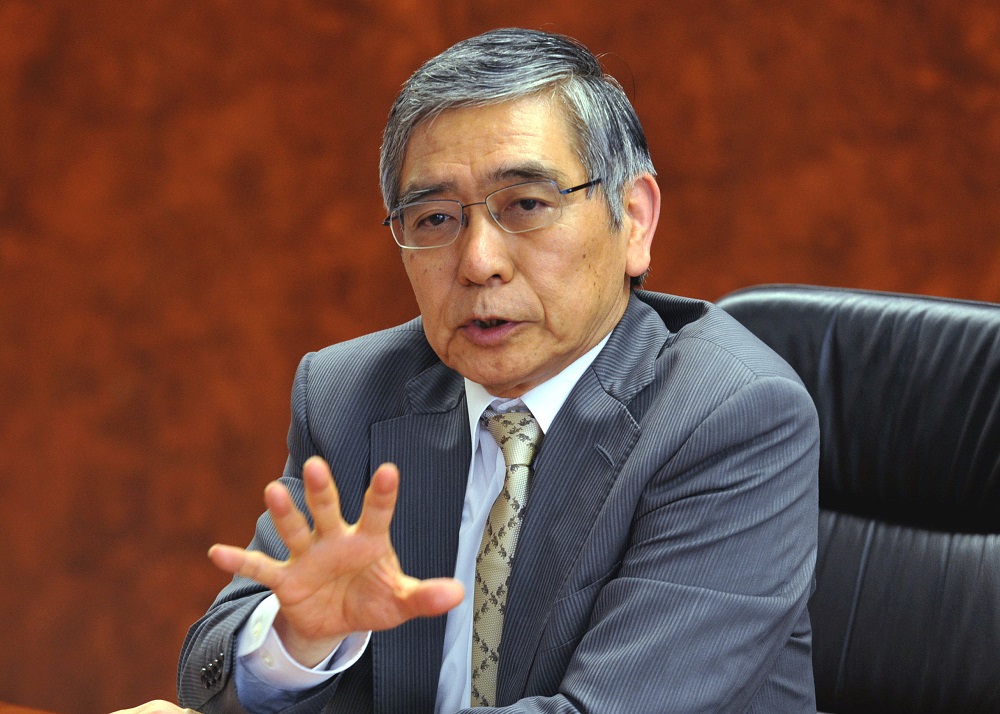How did Japan begin FX intervention?
Japan has begun FX intervention, but its chances of success could be compromised by the BoJ’s target band for JGB yields.

Bank of Japan Governor Haruhiko Kuroda
>> What if the Bank of Japan intervenes in USD/JPY?
We are accustomed to situations where a country has a fixed exchange rate or some sort of trading band for its currency. Much of Europe had one as part of the old Exchange Rate Mechanism (ERM), and many emerging market countries have some form of fixed rate system.To differing extents, these systems impose constraints on interest rates.
We just saw this most clearly in Hong Kong where its currency board system with the dollar meant that rates in HK had to rise 75-bps to match the rise from the Fed. Of course, most fixed-rate systems do not impose such binding constraints, but there are constraints nonetheless, for when the fixed rate or the band threatens to break market pressure is put on rates and, sometimes the central bank has to respond by moving policy rates to maintain the currency band.
But what about the case where a country has an interest rate target band with a flexible currency? Japan, for instance, has a target band for 10-year JGBs between -0.25% and 0.25% but a flexible currency. Does such a band impose constraints on the currency just like a currency band limit s the manoeuvrability of policy rates? Of course, the BoJ has the option to intervene in the bond market to enforce the band, just as countries with a currency band can intervene in the FX market. But often currency intervention is not enough and rates have to be moved. What’s more, if policymakers fail to defend the band, the subsequent move in the currency is usually very dramatic.
>> What is the outlook for Japanese Yen?
We know how central banks try to hold a currency peg or band, but how does Japan hold its JGB target band? While we’ve mentioned that it can accumulate JGBs to stop yields rising above the 0.25% limit , can we be sure that this is sufficient? The desirability of holding 10-year JGBs for domestic and international investors clearly depends on what yields are available elsewhere, such as on treasury yields.
On the face of it, this leaves the BoJ in a tough spot as 10-year JGB yields are around 0.25% while US 10-year yields are around 3.75%. But higher US yields are there in part because US policy rates and money market rates are so much higher than Japan’s, and this makes it expensive for Japanese investors to hedge their dollar exposure.
In fact, when you include yen hedging, the yield on 10-year treasuries falls below that of JGBs. Looked at this way, holding the 10-year JGB band might seem pretty comfortable. It does not require a weak yen, per se; only that the cost of hedging the proceeds of treasury sales back into yen is prohibitively expensive. That, in turn, requires a wide policy gap between the Fed and the BoJ and we can argue that it is the maintenance of this wide spread that keeps the yen weak.
Mr. Steve Barrow, Head of Standard Bank G10 Strategy, said "We would not say that this is such a tough constraint on BoJ flexibility as we might see for rates when countries operate a currency band. Nonetheless, there is an impact, and, right now, the Japanese authorities are trying to push against this by intervening to strengthen the yen. We could think of it as being a case of a central bank cutting rates when its currency is at the very bottom of the trading band. That’s probably a bit harsh; as we’ve said it’s the hedging cost that is the key not the level of the yen. As a result, it is most likely that this clash between the flexible exchange rate and the fixed JGB band does not create some nasty consequences, such as a disruptive break of the JGB trading band. But, as they say, to be forewarned is to be forearmed".








